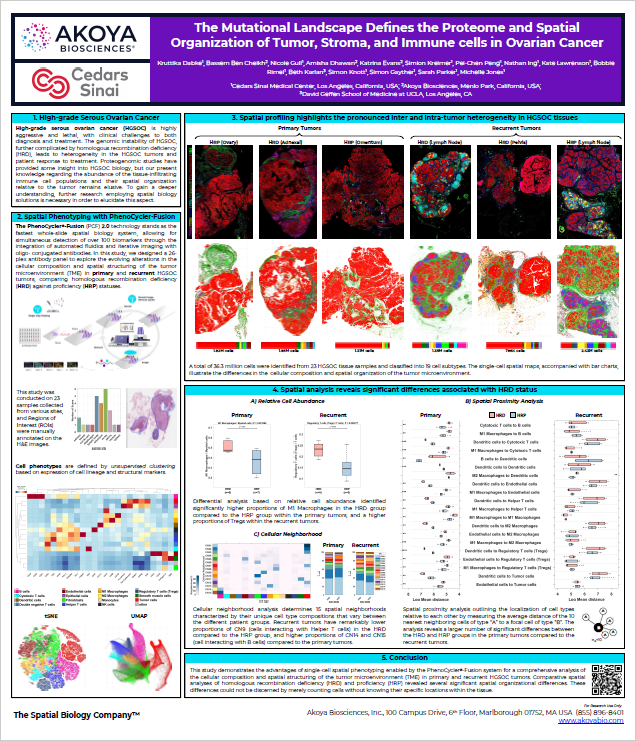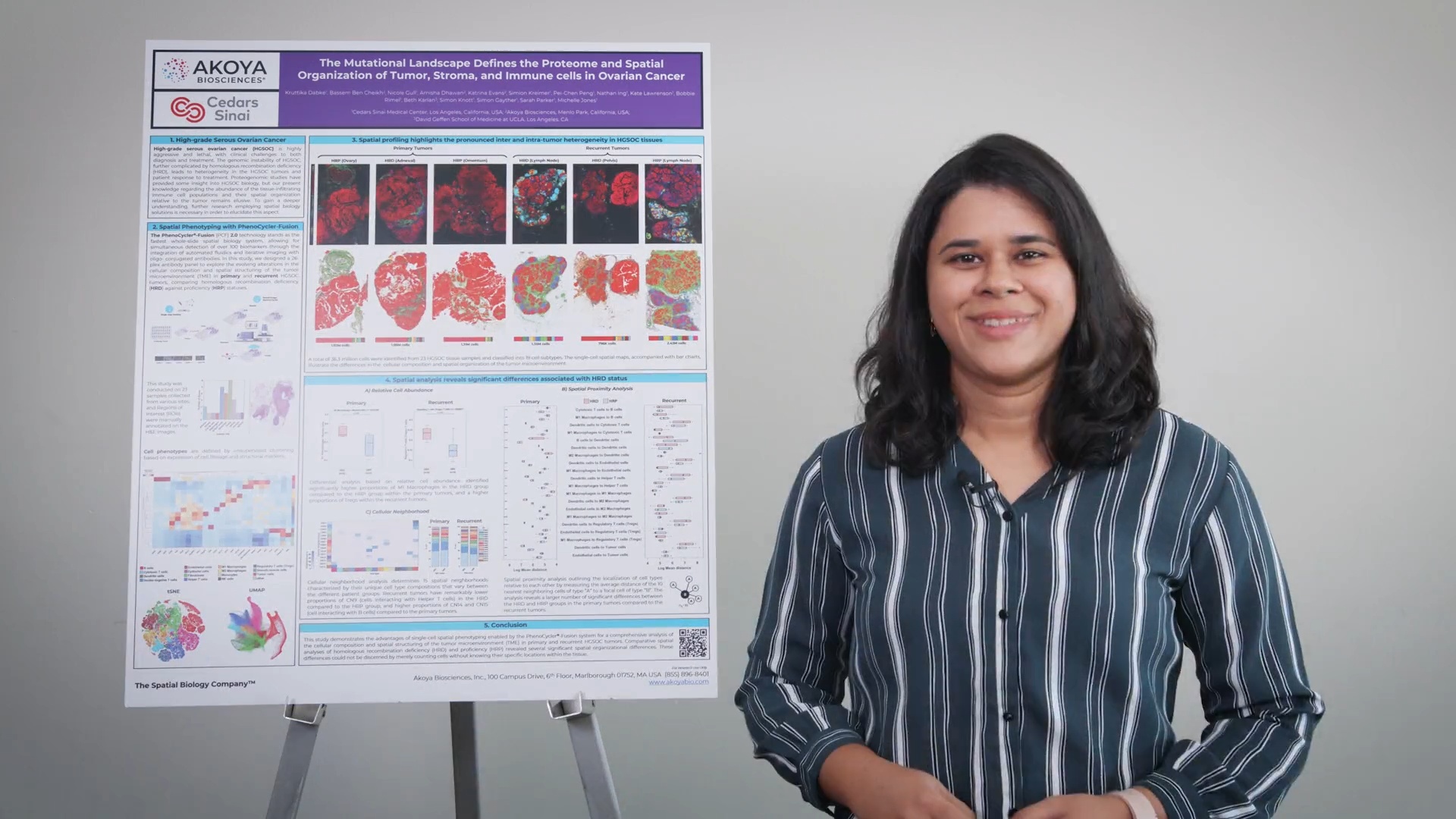Poster Presentation
The Mutational Landscape Defines the Proteome and Spatial Organization of Tumor, Stroma, and Immune cells in Ovarian Cancer
Kruttika Dabke, PhD (Cedars Sinai Medical Center) and her team used a 26-plex panel on the PhenoCycler-Fusion platform to profile 36 million cells and map the tumor immune landscape of high-grade serous ovarian cancer (HGSOC), exploring how the HGSOC immune landscape is rearranged after treatment and how that is influenced by homologous recombination repair (HRR) mutations.
Conclusion
This study demonstrates the advantages of single-cell spatial phenotyping enabled by the PhenoCycler®-Fusion system for a comprehensive analysis of the cellular composition and spatial structuring of the tumor microenvironment (TME) in primary and recurrent HGSOC tumors. Comparative spatial analyses of homologous recombination deficiency (HRD) and proficiency (HRP) revealed several significant spatial organizational differences. These differences could not be discerned by merely counting cells without knowing their specific locations within the tissue.
Authors
Kruttika Dabke1, Bassem Ben Cheikh2, Nicole Gull1, Amisha Dhawan2, Katrina Evans2, Simion Kreimer1, Pei-Chen Peng1, Nathan Ing1, Kate Lawrenson1, Bobbie Rimel1, Beth Karlan3, Simon Knott1, Simon Gayther1, Sarah Parker1, Michelle Jones1
Kruttika Dabke1, Bassem Ben Cheikh2, Nicole Gull1, Amisha Dhawan2, Katrina Evans2, Simion Kreimer1, Pei-Chen Peng1, Nathan Ing1, Kate Lawrenson1, Bobbie Rimel1, Beth Karlan3, Simon Knott1, Simon Gayther1, Sarah Parker1, Michelle Jones1
1. Cedars Sinai Medical Center, Los Angeles, California, USA; 2. Akoya Biosciences, Menlo Park, California, USA; 3. David Geffen School of Medicine at UCLA, Los Angeles, CA
Unlock Your Next Discovery
Connect with an Akoya scientist today to discuss your research and how spatial phenotyping can help you unlock your next discovery.




